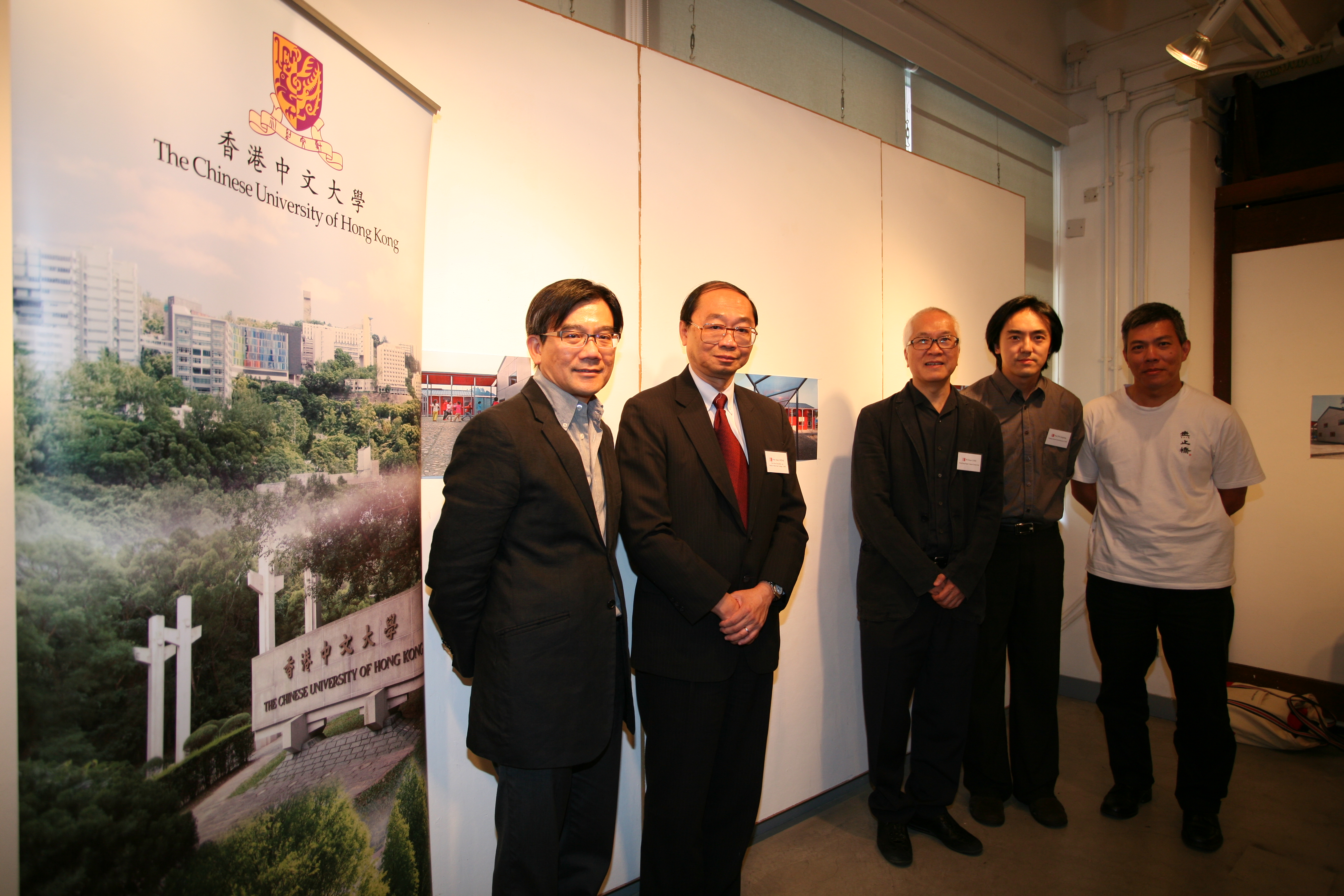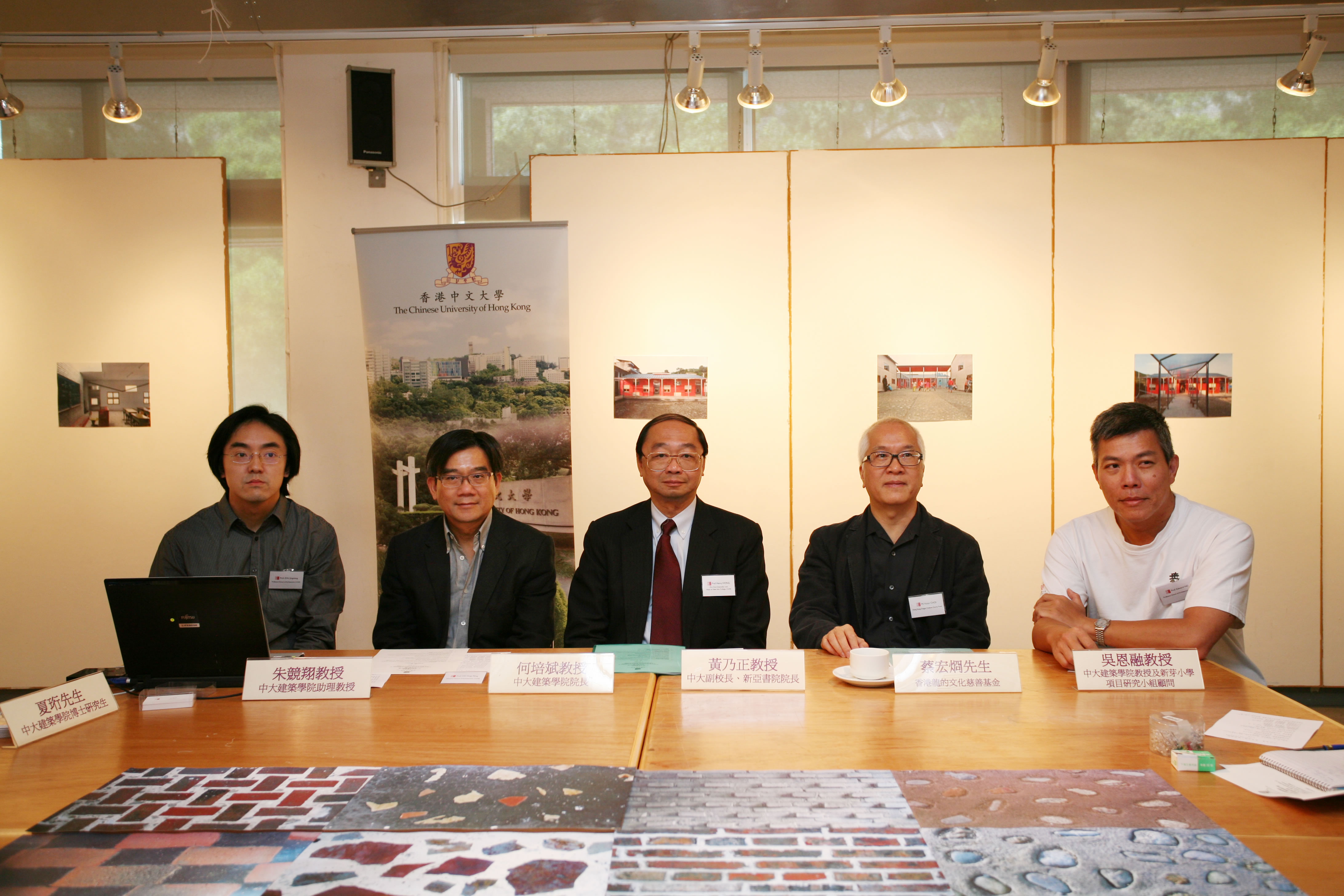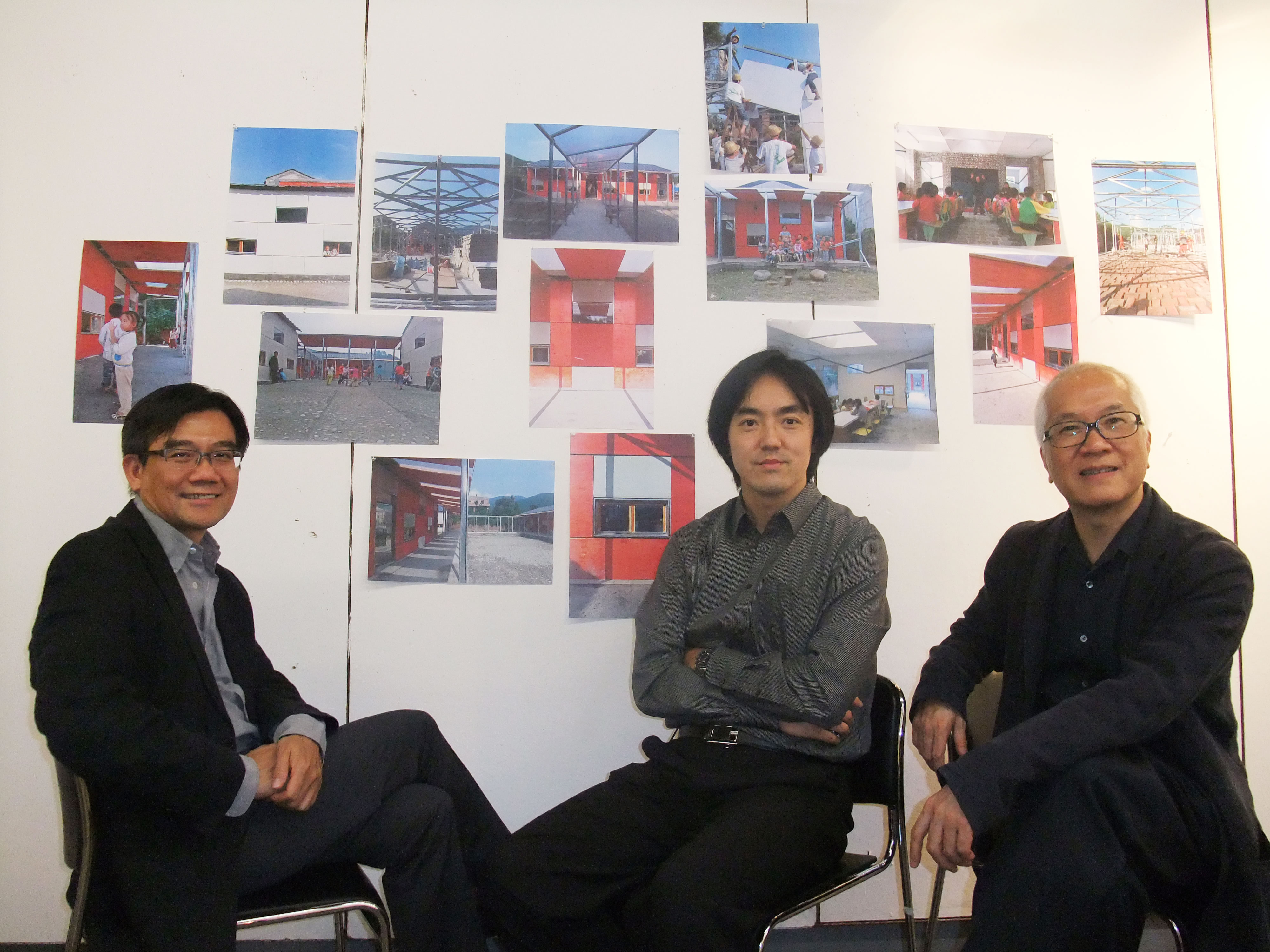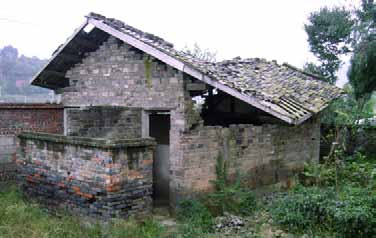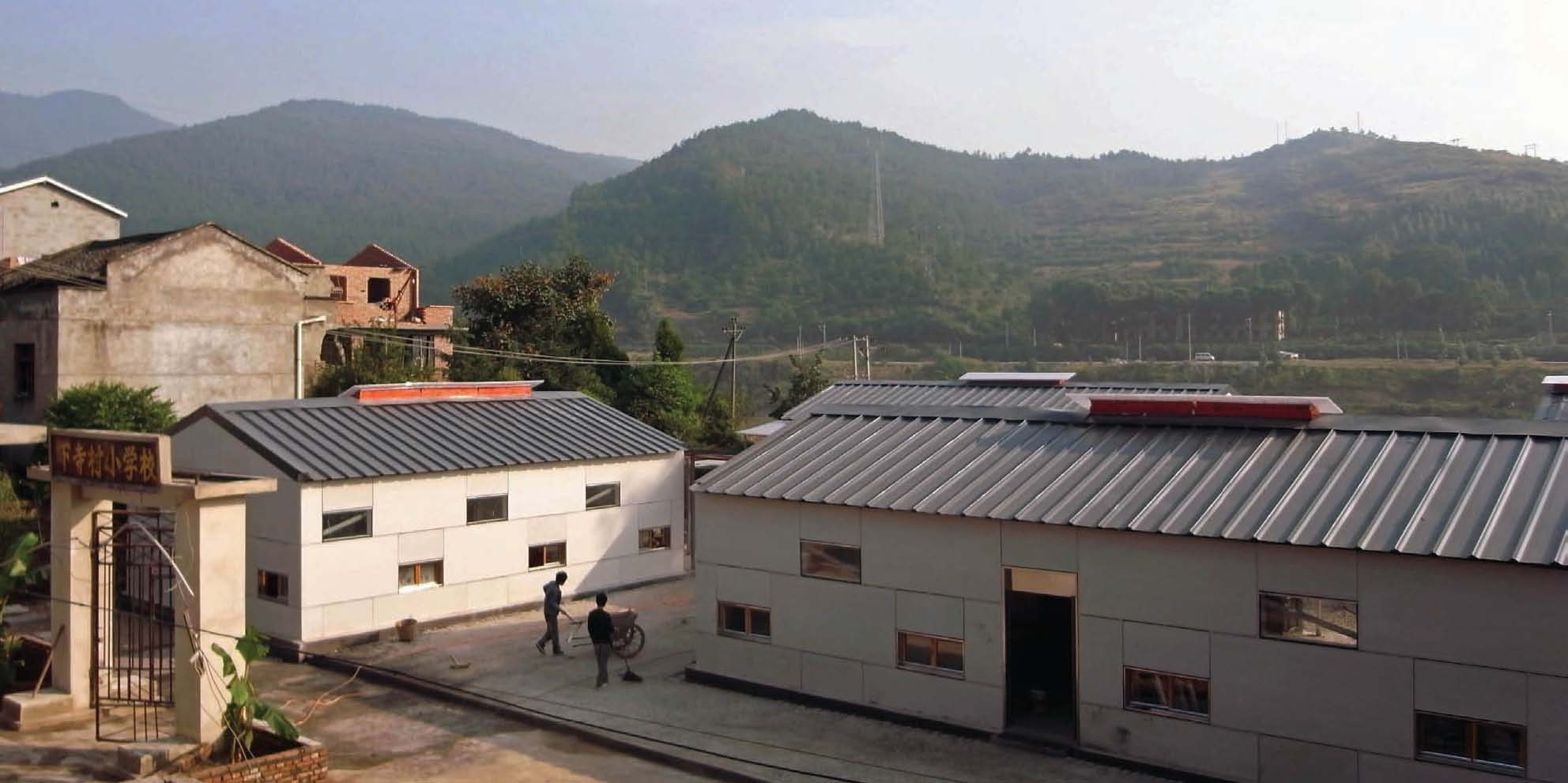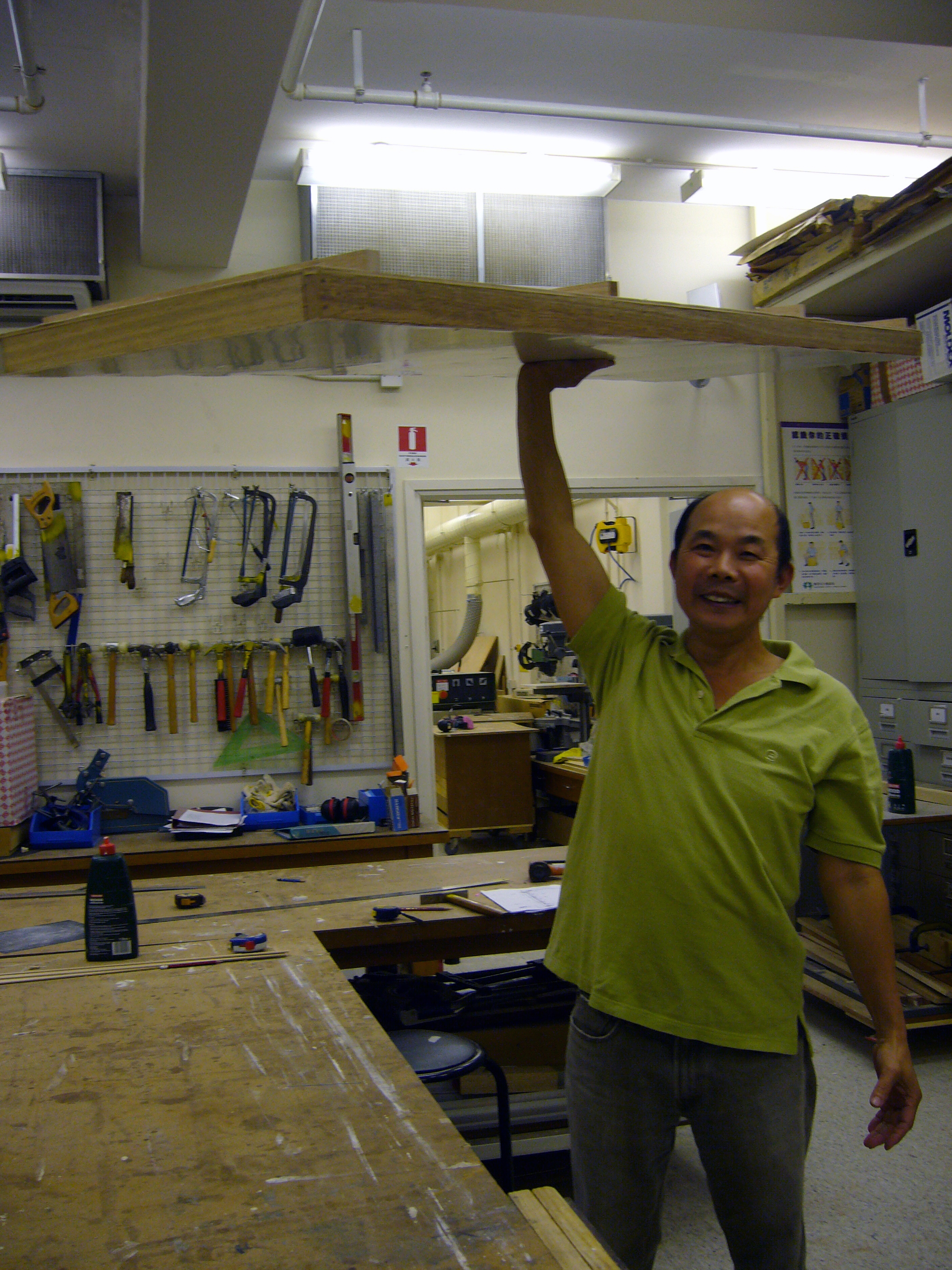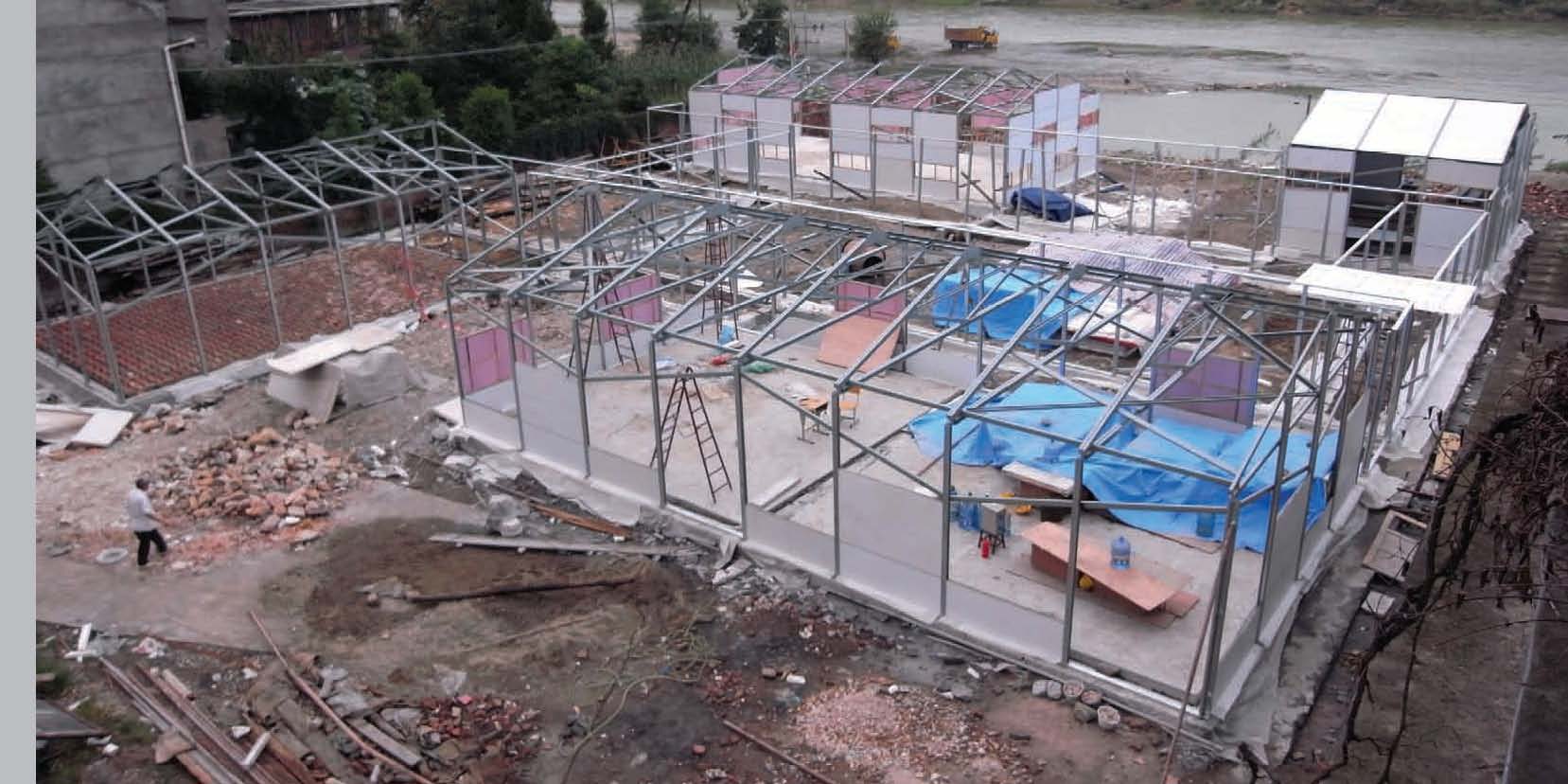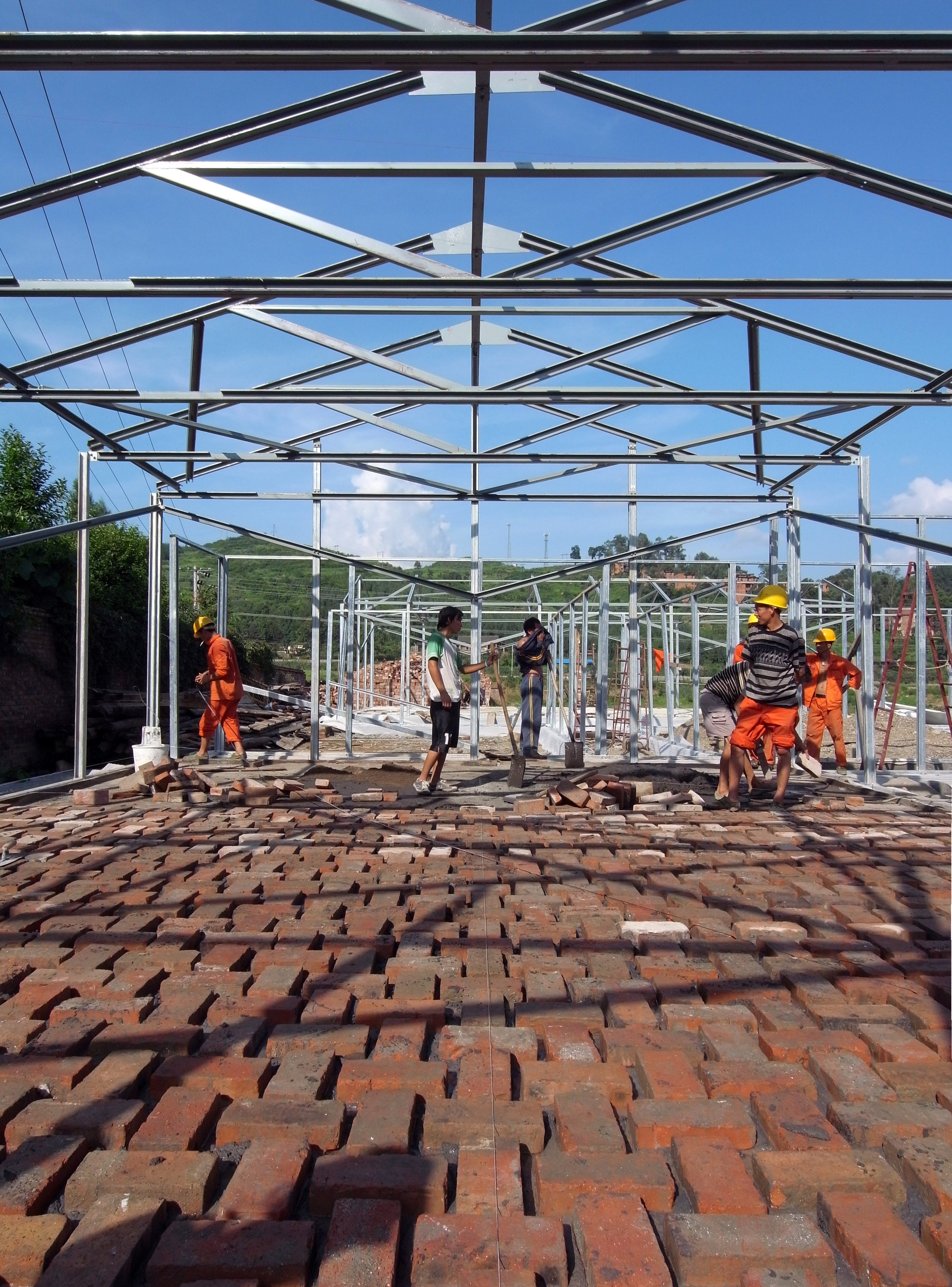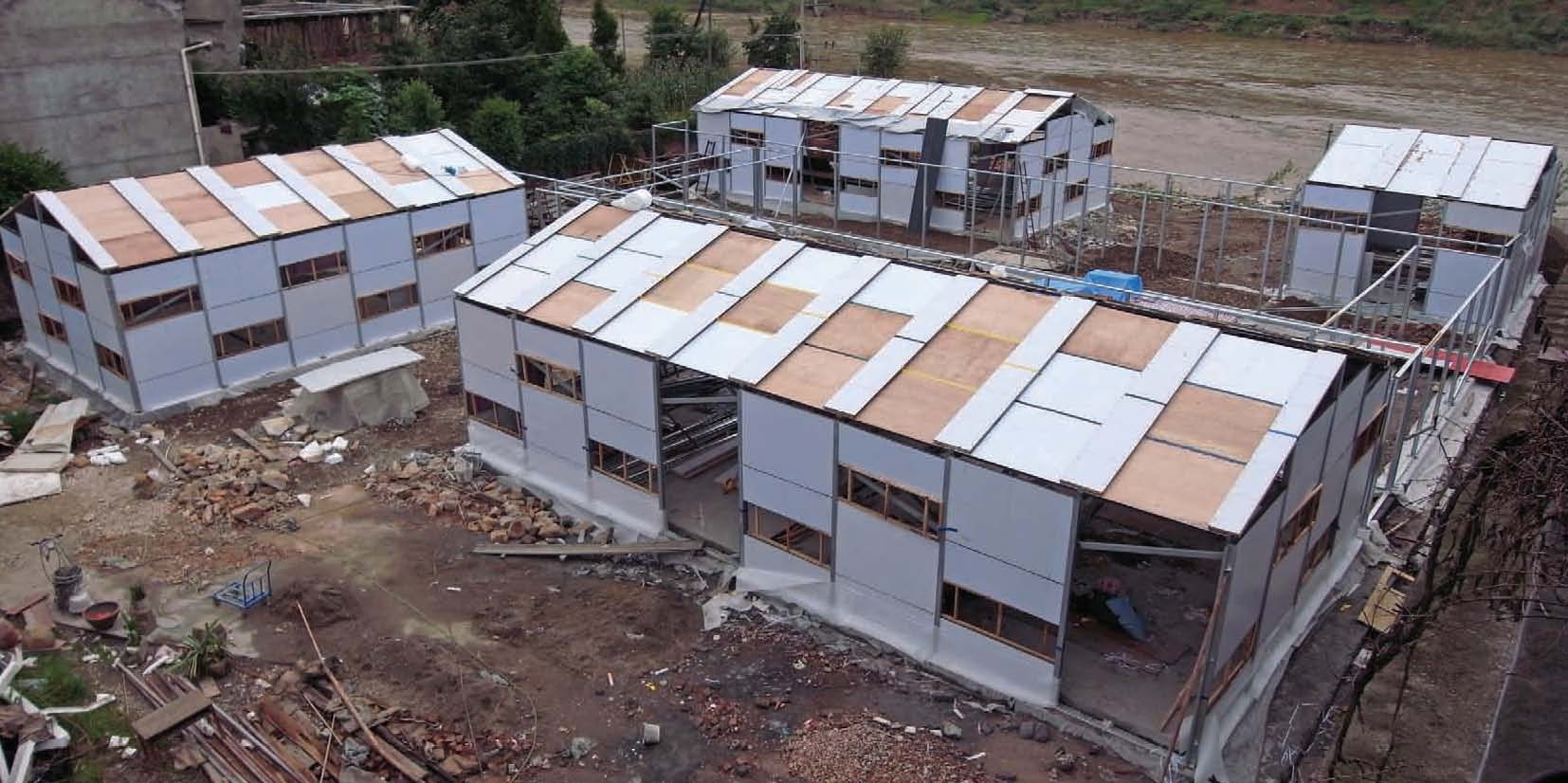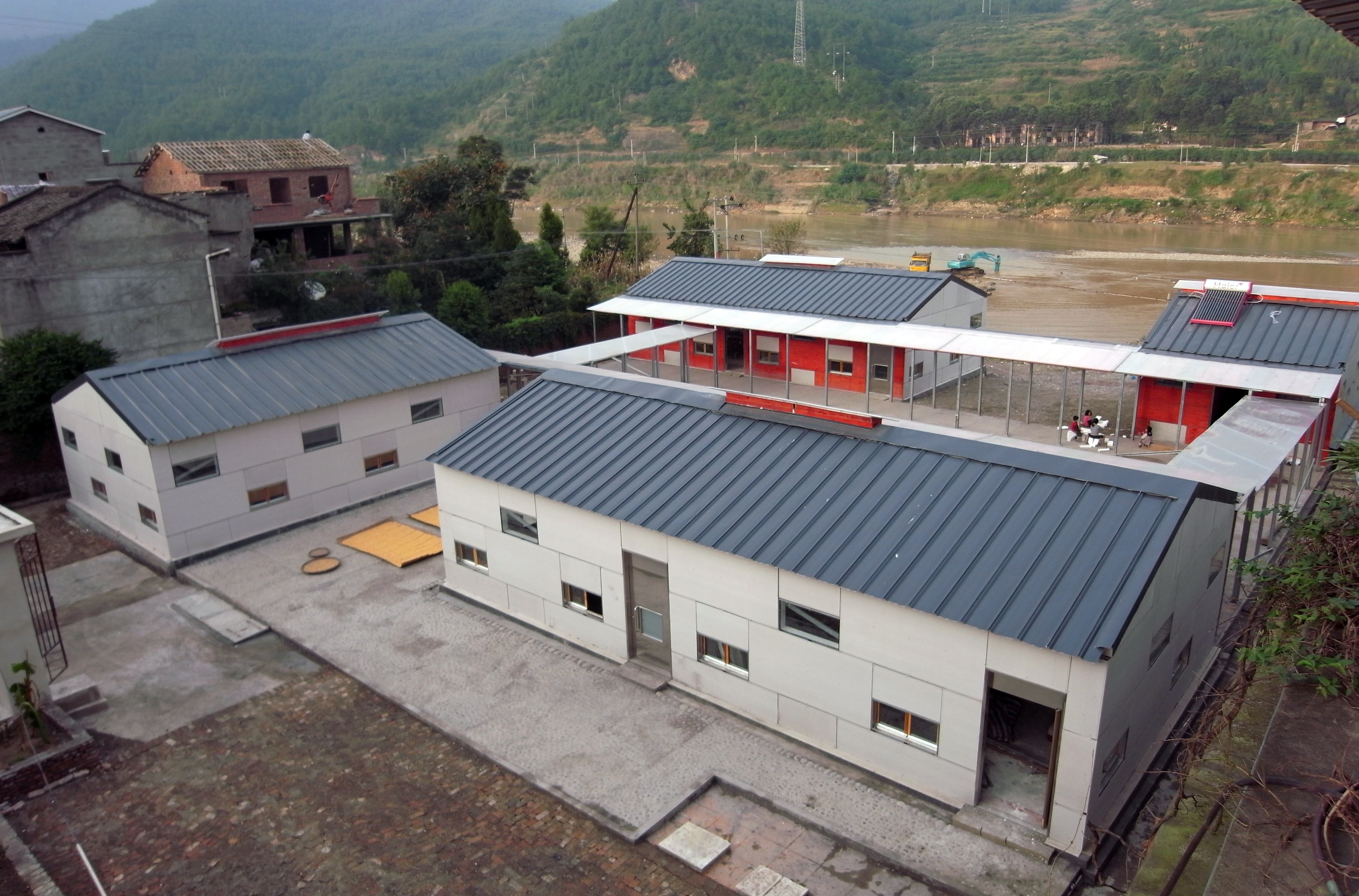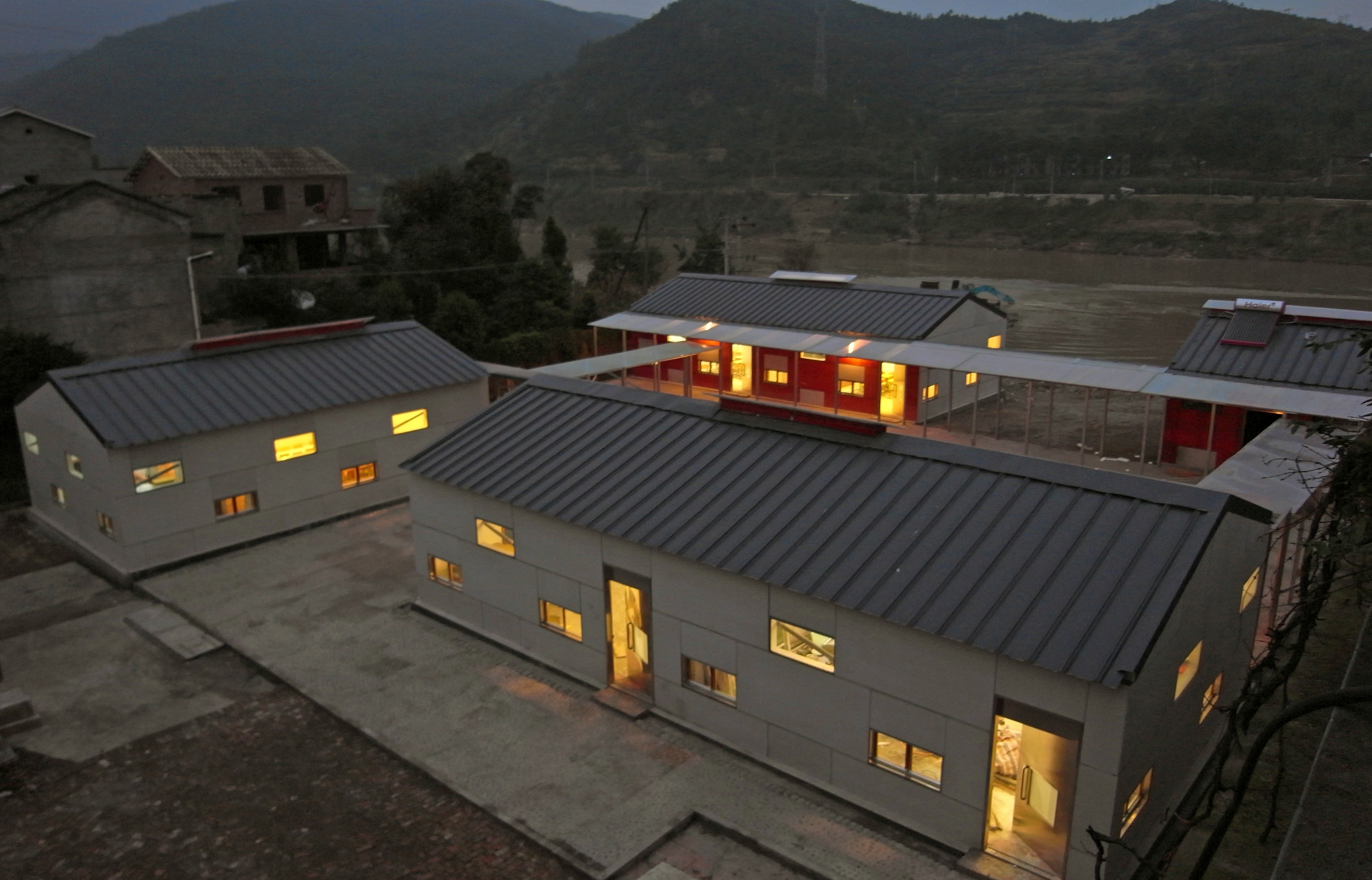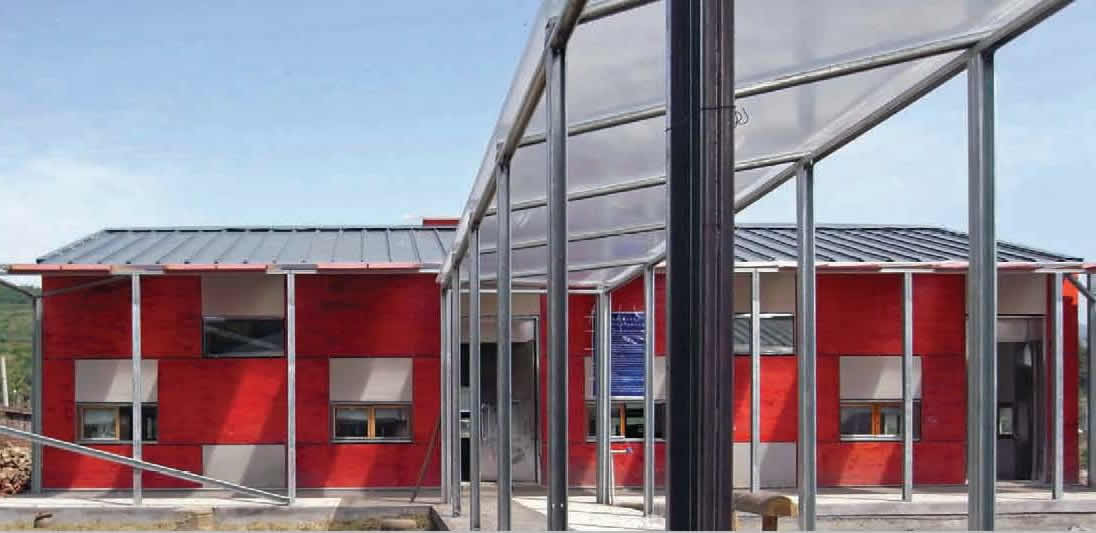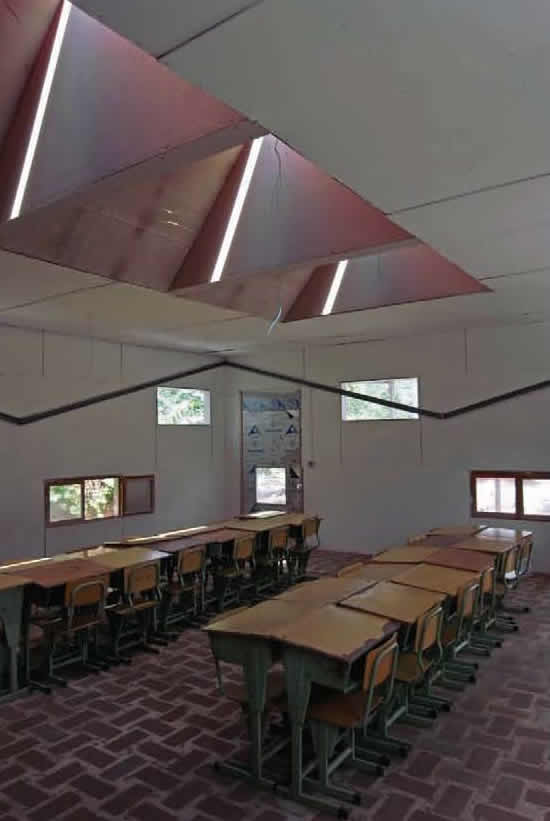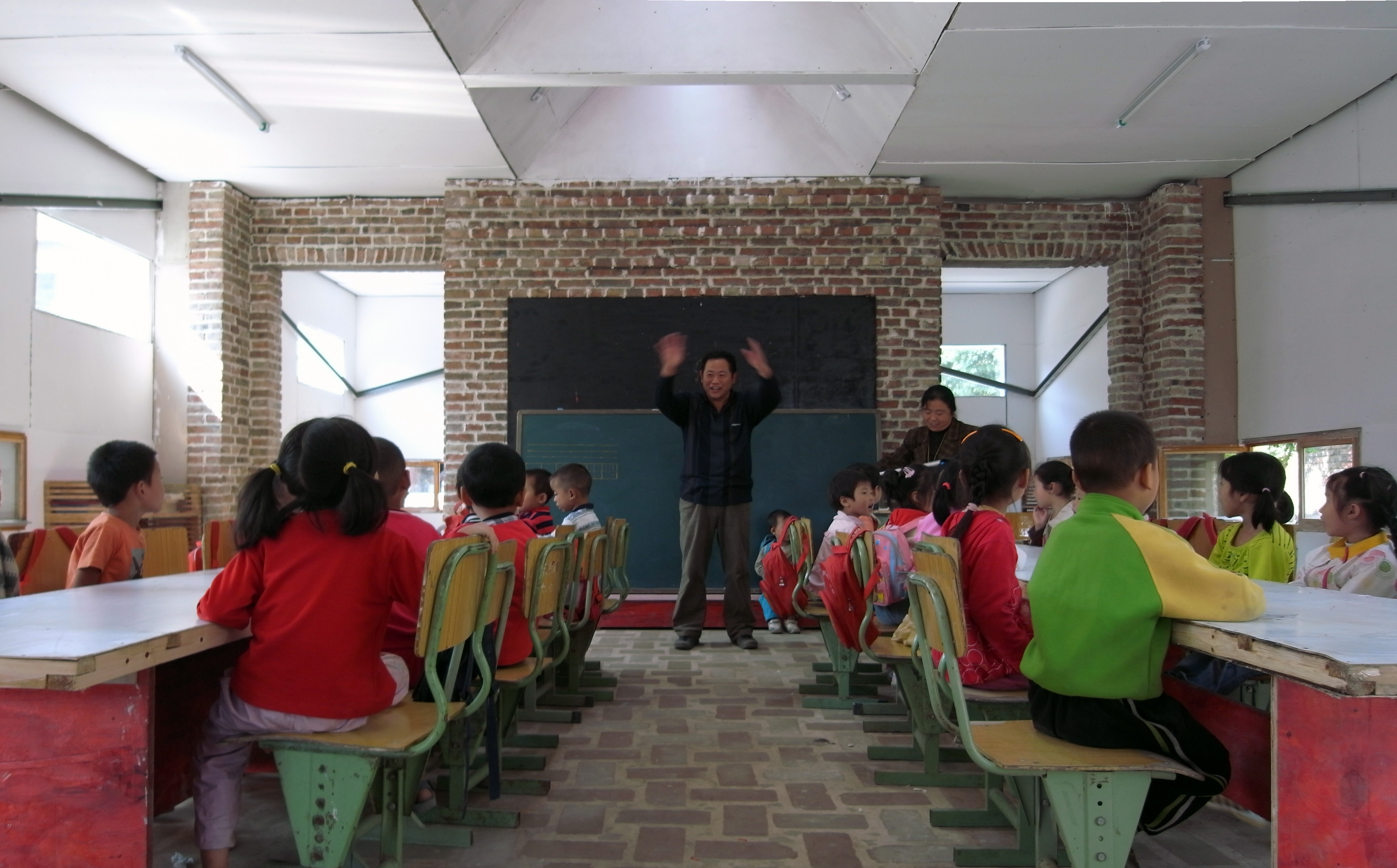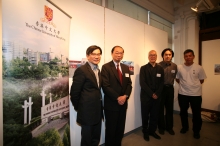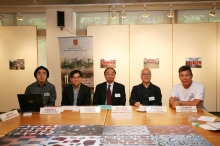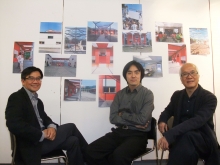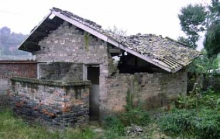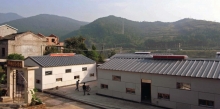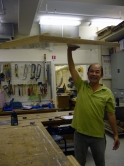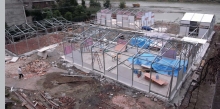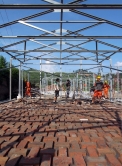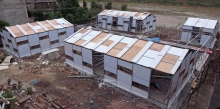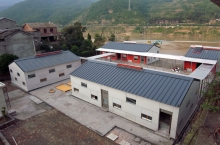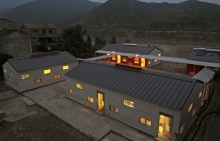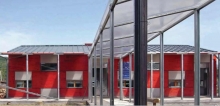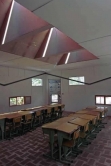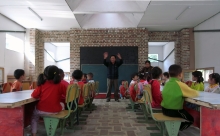CUHK
News Centre
CUHK Team Took Two Weeks to Build Durable Eco School in Sichuan
The tremendous loss of life and property caused by the 5.12 Sichuan Wenchuan Earthquake reveals the absence of decent structural design and adequate monitoring of the construction process in the region. Reconstruction has been difficult and a large number of temporary shelters that are neither durable nor thermally comfortable have been built in an attempt to meet the urgent needs of those affected. These shelters, when demolished later, will give rise to new construction waste.
A research team led by Prof. Zhu Jingxiang of the School of Architecture at The Chinese University of Hong Kong (CUHK) has developed an integrated light-structure system for the reconstruction of New Bud Primary School at Xiasi village in Sichuan’s Jiange County. The old building suffered serious damage in the earthquake, so its students had to walk for an hour to attend classes in another school. With the support of the Hong Kong Dragon Culture Charity Fund and the CUHK New Asia Sichuan Redevelopment Fund, the new school was completed in just two weeks and has been in operation since September. The building is safe and durable, and the cost of construction is low. It also looks attractive and features good thermal performance and a high energy-saving capacity.
The primary load-bearing part of the school is a light-gauge steel frame, which is strengthened by a prefabricated panel system. These two parts are bound together by mechanical fasteners to form a strong but light composite structure. Although the wall is only 16cm thick, the system is able to resist high seismic forces. Under the protection of the outer panel and surface coating, the life of the skeleton is expected to last over 20 years.
The school features high thermal performance, thanks to the use of thermal insulation and storage materials. It also adopts a multi-layered envelope system where the position and ratio of the doors and windows are carefully designed to ensure that classrooms will be cool in summer and warm in winter. The decentralized opening system brings in enough day-light and natural ventilation, which greatly reduces energy consumption.
Additionally, the design incorporates environmental concepts by mostly using mechanical joints instead of chemical compounds to avoid toxic emission and to facilitate maintenance and disassembly in the future. A solar water heater and an eco-friendly toilet are equipped to improve rural sanitation.
The principle of sustainability is also reflected in the choice of materials. Materials dismantled from the old school are reused as paver, spacer or thermal mass. Some of the stone bases discarded by the villagers are also reused to furnish the courtyard. Besides, no other materials except cement were purchased for construction. Old bricks, stones and tiles are reused to achieve terrazzo effects in the flooring. This encourages local workers to preserve and develop their crafts, while reducing dependence on industrialized building materials.
As all superstructure components are prefabricated in factories in Shenzhen and Chengdu, on-site assembly became an easy task. With the guidance of CUHK researchers, the 450-square metre New Bud Primary School was built within two weeks. The new school comprises four single-storey buildings, a central courtyard, four standard classrooms, a multi-function hall, a teachers’ office and an eco-friendly toilet.
Prof. Zhu said, ‘It takes many years for me to conceive, experiment and, finally, put such a light-structure system into practice. The success of the construction of New Bud Primary School demonstrates the significance of articulating research in design. The research brings about new ideas and methods, while the design transforms such ideas and methods into a building. This research has also ironed out the long-existing contradiction between construction speed and quality. It does not only integrate the potential ability of different manufacturers, but also provides an opportunity to unite different communities and disseminate knowledge.’
The building industry and the largest temporary house company on the mainland have shown great interest in the project. They have conducted site visits and explored the feasibility of technological collaboration. Mainland architects have also invited Prof. Zhu to lecture on the innovative design and the speedy construction of the school.
In the final stage of construction, 30 volunteers including university students recruited from the mainland and Hong Kong, as well as architects, took part. This enabled them to experience innovative building technology and the symbiotic relationship that can exist between the rural and the urban.
Prof. Zhu and his team are now working on the construction of the second New Bud Primary School. They strive to improve and popularize this highly integrated sustainable architecture, with the aim to further contribute to the reconstruction of Sichuan and other developing areas.
(From left) Prof. HO Puay-peng, Director, School of Architecture, CUHK; Prof. Henry WONG Nai-ching, Pro-Vice-Chancellor and Head of New Asia College, CUHK; Mr. Victor CHOI, Hong Kong Dragon Culture Charity Fund; Prof. ZHU Jingxiang, Assistant Professor, School of Architecture, CUHK; and Prof. Edward NG Yan-yung, Co-investigator of New Bud Primary School Project, and Professor, School of Architecture, CUHK
(From left) Prof. ZHU Jingxiang, Assistant Professor, School of Architecture, CUHK; Prof. HO Puay-peng, Director, School of Architecture, CUHK; Prof. Henry WONG Nai-ching, Pro-Vice-Chancellor and Head of New Asia College, CUHK; Mr. Victor CHOI, Hong Kong Dragon Culture Charity Fund; and Prof. Edward NG Yan-yung, Co-investigator of New Bud Primary School Project, and Professor, School of Architecture, CUHK
(From left) Prof. HO Puay-peng, Director, School of Architecture, CUHK; Prof. ZHU Jingxiang, Assistant Professor, School of Architecture, CUHK; and Mr. Victor CHOI, Hong Kong Dragon Culture Charity Fund
A light-gauge steel frame and light materials are used in building the school, enabling it to resist high seismic forces
Construction process - with the guidance of CUHK researchers, the 450-square metre New Bud Primary School was built within two weeks
Construction process - with the guidance of CUHK researchers, the 450-square metre New Bud Primary School was built within two weeks
The decentralized opening system brings in enough day-light and natural ventilation, which greatly reduces energy consumption


